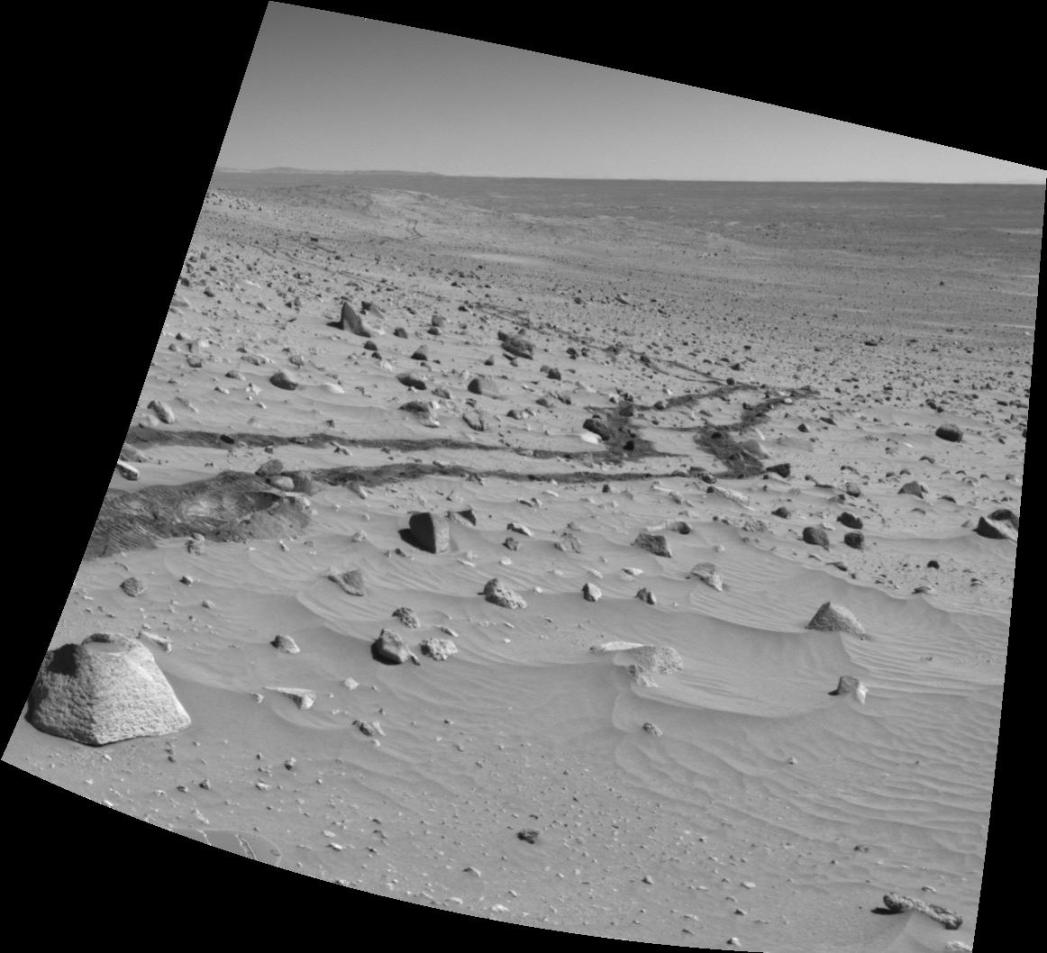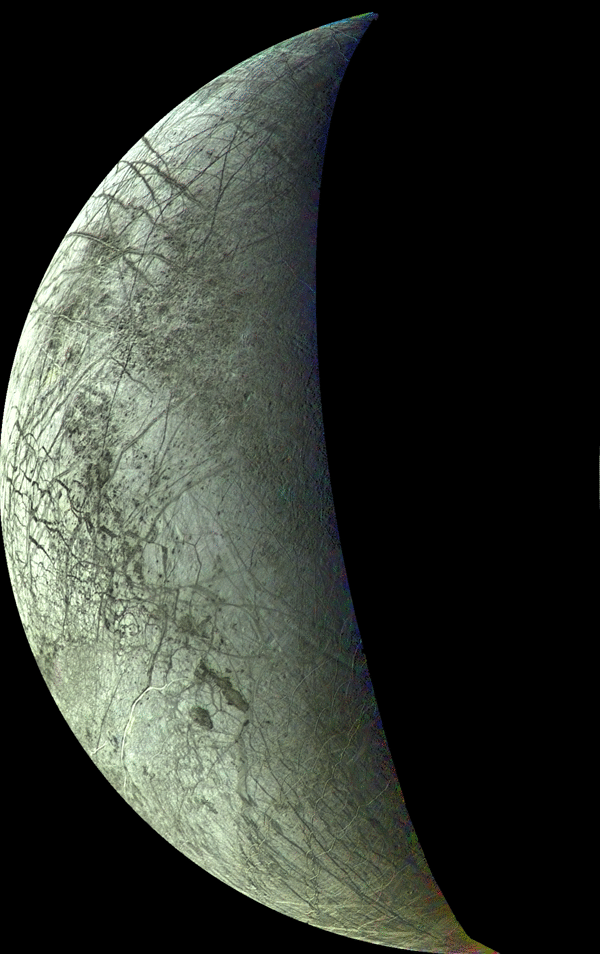
They have seen strange sunsets for us

in places no human could walk.
Their eyes see deeper
into their world to find things our eyes can appreciate but our minds only begin to understand.

The first tools of humans on Mars continue to exceed expectations, making their parents proud of them. They learn. They function independently.
It may be some time before we see their like again, given the current priorities of the people running NASA. But the kind of people who designed them in the first place are still working out there, even if they no longer have the blessing of the space program.

In Science
Science 19 January 2007:
Vol. 315. no. 5810, pp. 322 - 324
DOI: 10.1126/science.315.5810.322:
Thirteen years ago on a sunny spring morning, two divers prepared to descend into what could be the world's deepest water-filled pit: northeastern Mexico's El Zacatón, a 180-meterwide limestone sinkhole filled by hydrothermal springs. The water is 30°C, teeming with strange microbes, and pitch-black below the first 30 meters. One diver was Sheck Exley, then holder of the world's scuba depth record; the other was his friend Jim Bowden, a top underwater caver. They wished each other luck, adjusted their masks, and began free-falling down separate safety lines. Ten hours later, Bowden surfaced with a new world record--925 feet (282 meters)--without ever finding the bottom. Exley did not surface. Three days later, his body was pulled out, tangled in the line. No one knows what killed him.
The sinkhole's depth remains unknown; sonars work poorly in narrow spaces, so readings peter out at about 330 meters. But this week another team is preparing to replumb the mysteries of Zacatón--this time, with an audacious new robot made to probe both its geology and biology. The NASA-funded Deep Phreatic Thermal Explorer (DEPTHX) is designed to navigate and map deep underwater tunnels, spot living things, grab them, and bring them back--all without direction from the surface. If it survives its first voyage in March, DEPTHX will be a major advance in robotics and exploration of extreme environments. If it survives NASA budget cuts, it could be a model for probing Jupiter's moon Europa, where Zacatón-like cracks or holes in the icy surface may offer the best chance of finding extraterrestrial life.
Compared to other autonomous underwater vehicles (AUVs), DEPTHX is "well ahead," says Gwyn Griffiths, head of the National Oceanography Centre underwater lab in Southampton, U.K. But like other NASA-funded astrobiology projects, the robot's future is uncertain. Its funding is about to run out, and a follow-up project may be a long shot as NASA cuts back support for such efforts. "Robotic exploration of our planet and the universe has been wildly successful and cheap," says Dana Yoerger, an AUV guru and cheerleader for DEPTHX at Woods Hole Oceanographic Institution in Massachusetts. "To cut back on stuff like that for manned exploration is going to give the taxpayers very poor value."
The ringleader of DEPTHX is extreme engineer and cave explorer Bill Stone, who in 1989 made it to NASA's semifinal astronaut-selection round but was nixed as being too independent. During the past 3 decades, he has worked on space and military projects for the National Institute of Standards and Technology and on the side explored some of Earth's most dangerous caverns. Traveling a kilometer or more under the surface, he has stayed down for weeks at a time in air-filled caves. Underwater, he has often dived through twisty, silt-choked passages, re-emerging alive to appear in National Geographic. Finding standard scuba tanks too bulky, he invented a compact rebreather that recycles gases, now used by divers worldwide. In 1998, he made the first high-resolution maps of an underwater cavern, Florida's Wakulla Spring, by inventing a torpedo-like personal propulsion vehicle studded with sonars--the precursor to DEPTHX. He and colleagues drove the devices through 6.4 kilometers of inky-black passages to create three-dimensional (3D) images of the invisible walls. "Deep cave systems are the last terrestrial frontier; they push the limits of human endeavor, technology, and psychology," says Stone.
They are also dangerous. Stone has lost 16 friends to exploration accidents and has dragged out the bodies of seven himself. Exley was his cave-diving mentor. "I've come to the conclusion that there are places where humans cannot travel safely," says Stone, now 54. "We need a surrogate."
At Zacatón, Stone is working with Marcus Gary, a University of Texas, Austin, Ph.D. student who assisted at the fatal 1994 dive and became obsessed with the sinkhole. In a Geological Society of America paper last year, Gary reported that the system owes its vastness to volcanism that adds heat and gases to water running into the limestone. This hastens chemical dissolution of the rock as well as making things cozy for unusual bacteria. In 2003, Stone and Gary joined with a cast of luminaries in space, robotics, and microbiology to win a $5 million, 3-year grant from NASA's Astrobiology Science and Technology for Exploring Planets (ASTEP) program to use Zacatón as a proving ground for a prototype robot that could explore Europa. A side benefit would be exploring Zacatón itself.
Another team member is Richard Greenberg, a planetary scientist at the University of Arizona in Tucson who helped show that Europa, about the size of Earth's moon, has a hidden ocean covered with an icy crust. Tides crack and puncture the ice from below, creating sinkholelike features on the surface. Like Zacatón, Europa's ocean is also probably heated by volcanism--ideal for the development of life. Many scientists think a robot might have to melt through some 10 kilometers of ice to reach liquid and thus life, but Greenberg says organisms--probably strictly microbes--may also lie in the surficial slushy cracks and holes. "The beauty of this robot is that it would have the smarts to get in there and look itself," he says. (A separate craft would probably melt its way to the bottom of the ice and release one or more DEPTHX-like robots to search the liquid ocean.)

People who NASA find "too independent" to be astronauts will be the ones who find the horizon, and sail over the edge of the Earth, with the children of their minds and hands, finding it round, not flat, and greater than the empires of men.


No comments:
Post a Comment